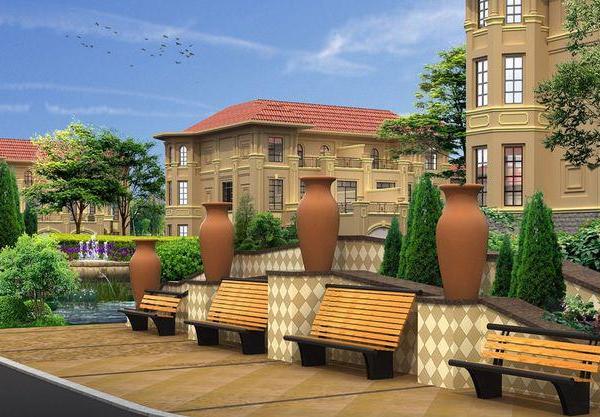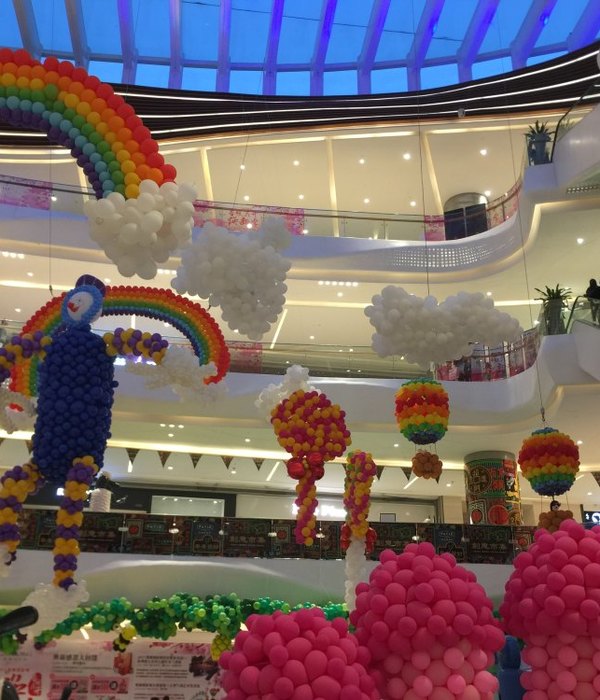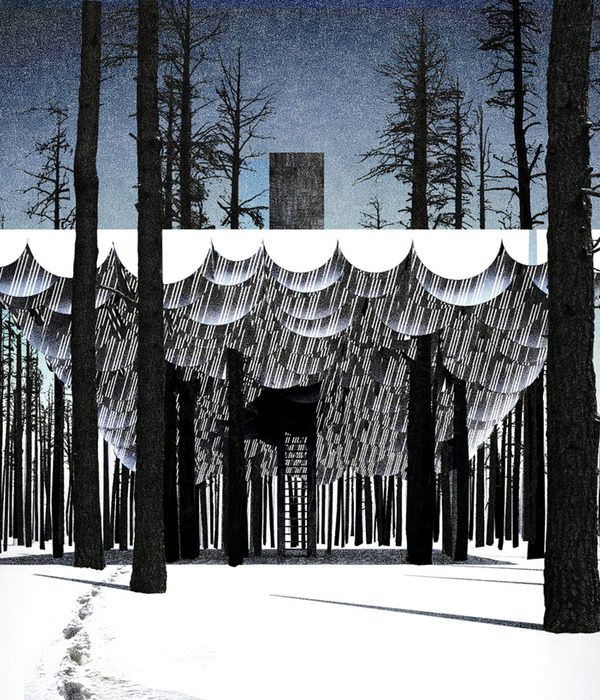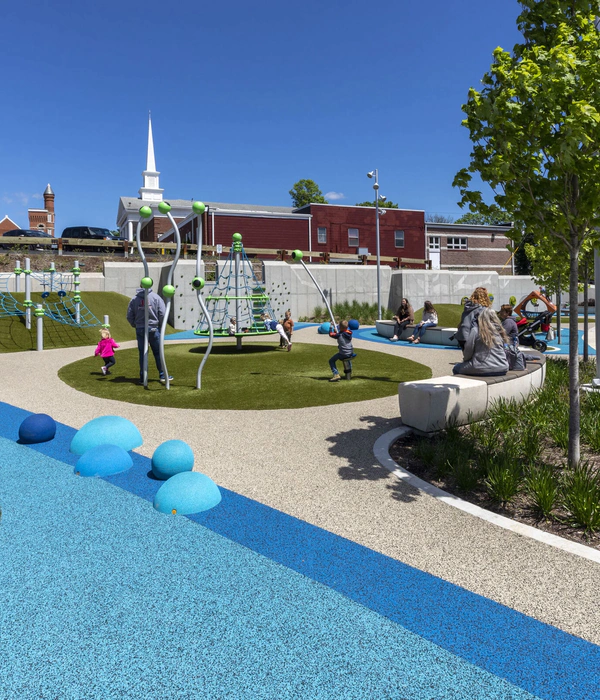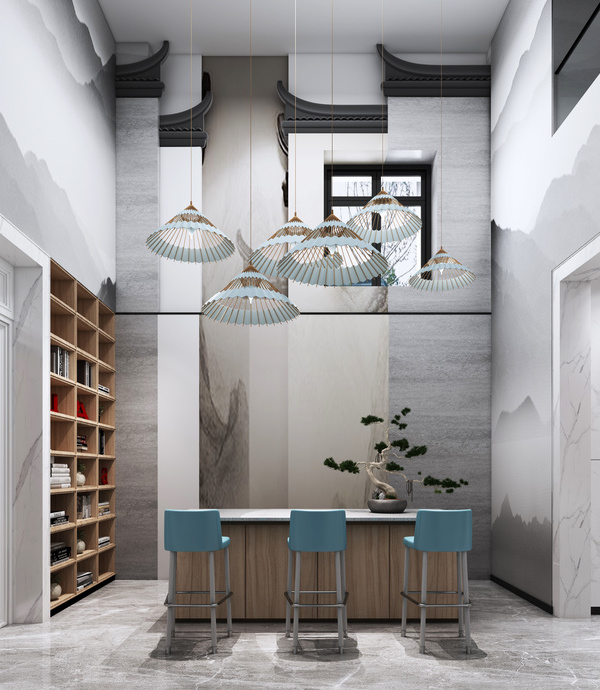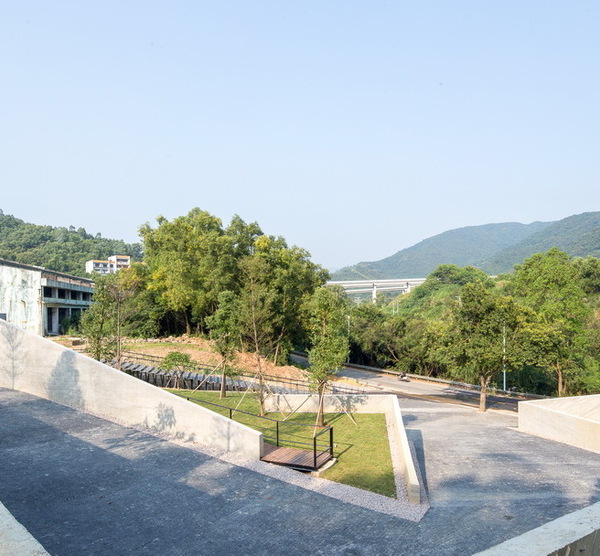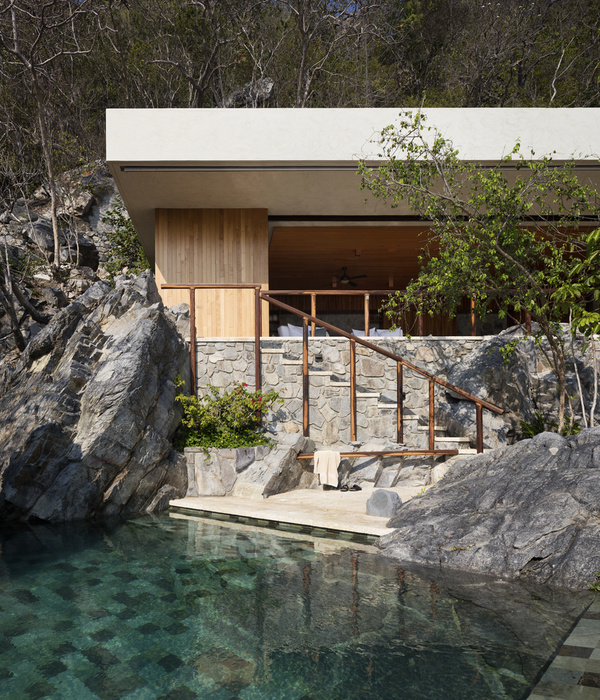CCA:该项目(Orchid Pavilion)是为 Casa Wabi 艺术中心而设计的,它位于埃斯孔迪多港郊区,地处山海之间。这是一个永久性、可持续和轻质的木质结构,专门用于保护瓦哈卡(Oaxaca )地区的兰花,突出了景观的生物多样性和文化多样性之间的紧密联系。
CCA:The Orchid Pavilion, designed for Casa Wabi, is located on the outskirts of Puerto Escondido, between the sea and the mountains. It is a wooden structure, permanent, sustainable, and lightweight, dedicated to the conservation of orchids in the Oaxaca region, which highlights the strong relationship between the biological and cultural diversity of the landscape.
当我们着手设计这座兰亭时,我们开始研究一些关于兰花这种植物生长相关的技术、组成部分和现实问题。很明显,为了让兰花生长、繁殖并集中在一起,我们需要为它们创造适宜的生长环境:潮湿、部分遮荫、通风良好。
但更有趣的是,日本的“侘寂”(Wabi-Sabi)哲学认为,美与和谐存在于简约、不完美和不拘一格之中,而瓦哈卡海岸丰富而复杂的传统——乡土气息、就地取材以及当地工匠的高品质手工作品——这两者之间的关系将成为该提案的核心。后来,我们意外地想到了日语中的“Ikigai”一词。
As we approached the design of the Orchid Pavilion at Casa Wabi, our research pointed toward some clear technical features, components, and facts. It became evident that in order to grow, reproduce, and collect orchids, we needed to create the right environment for them to thrive: humid, partially shaded, and well-ventilated.
But more interestingly, the relationship between the Japanese philosophy of Wabi-Sabi, which believes that beauty and harmony are found in simplicity, imperfection, and unconventionality, and the rich and complex traditions of the Oaxacan coast—its vernacular, locally sourced materials, and the high quality of the artisanal works of the local craftsmen—were to be at the center of our proposal. Then, unexpectedly, we thought of the Japanese word Ikigai.
当一个人找到自己的目标和使命时,他就更有可能健康长寿。然而,我们很容易迷失在日常工作的压力和嘈杂之中,因此我们需要腾出空间,需要冷静下来,在这里,我们需要与兰花待在一起。
当我们走进亭子,呼吸着湿润的空气,聆听水滴轻轻落下的声音,感受微风拂过,希望我们能记起自己是谁,我们存在的理由是什么。我们的“生机”是什么。
When somebody finds their purpose, their calling, they are more likely to lead a long, healthy life. However, it’s easy to get lost in the stress and noise of our daily routine, so we need to make space, we need to chill out, in this case, with the orchids.
When you enter the pavilion, you breathe in the humidity, hear the gentle drops falling, feel the crossing winds, and hopefully, you will be able to remember who you are, what your reason for being is. What is your Ikigai.
展亭的设计注重三大要素 Our pavilion focuses on three main elements:
首先,兰亭是一个简单朴素的机器。十二个混凝土加湿器利用重力在结构上创造出一个潮湿的环境,里面种植着来自瓦哈卡海岸的兰花。
其次,兰亭采用了简单的建筑材料和建造技术,其中包括当地采购的木材和在高温窑中烘烤的定制混凝土陶器。
最后,兰亭既是兰花的庇护所,同时也旨在唤起参观者对于“生”的深刻理解。
Firstly, the pavilion is a simple and austere machine. Twelve concrete-based humidifiers utilize gravity to create a humid environment within the structure that houses orchids from the Oaxacan coast.
Secondly, the pavilion employs simple construction materials and techniques, including locally sourced wood and custom-made concrete ceramic pieces baked in high-temperature kilns.
And thirdly, the pavilion serves as a sanctuary for the orchids while also aiming to evoke a profound sense of Ikigai in its visitors.
兰花茁壮成长的主要因素是潮湿的环境。错综复杂的根、枝和小叶从空气、土壤和所有表面收集水分。在一个简易木结构的顶部有一系列金字塔形的注水混凝土容器,容器通过缓慢过滤往地面掉落的小水滴,实现滴灌。水被混凝土托盘收集起来,可以保持长期湿润。微风和热量使兰花能够直接吸收环境中的水分,无需人工为其浇灌。
The main element that allows orchids to thrive is a humid environment. The intricate roots, branches, and leaflets gather water from the air, soil, and all surfaces. A series of pyramid-shaped, water-filled concrete basins rests at the top of a simple wooden structure. The basins slowly filter tiny droplets of water that fall to the ground, allowing for drip irrigation. The water is collected by concrete-based trays that remain permanently humid. The breeze and heat enable the orchids to drink water directly from the environment, eliminating the need for manual watering of the specimens.
“生命的本质是湿润,湿润的本质是美丽。”Life is the essence of wetness, and wetness is the essence of beauty” – Derek Zoolander
对于追求“侘寂”哲学的旅客而言,兰亭为他们提供了一个在长途跋涉后静坐下来饮水的庇护所。联想到人类的第一步是从树荫下迈出的,兰亭还传达了一段冥想之旅,因为人类喝的水和兰花吸收的水是一样的。
碗中的滴水声与不同的自然周期和人类活动产生了共鸣。这个凉爽的半沉浸式空间改变了参观者的视野和视角,使他们不仅能欣赏到品种多样的兰花,还能在和谐的状态下与谦逊的生命之根建立联系。
To the guests of Casa Wabi, the orchid pavilion offers a refuge to sit and drink water after a long walk. Remembering that the first steps of humanity occurred in the shade of a tree, the pavilion also communicates a contemplative journey, as the water people drink is the same water orchids drink.
The sound of dripping in the bowls resonates with different natural cycles and human activity. This cool, semi-submerged space changes the horizon and perspective of visitors as they descend to ground level, allowing them not only to appreciate the diversity of orchid species but also to connect with the humble root of life in a state of harmony.
Fundación Casa Wabi 是一个非营利组织,旨在促进当代艺术与当地社区在三个地点之间的对话:埃斯孔迪多港、墨西哥城和东京。其名称源于日本的“侘寂”哲学,即在简约、不完美和非传统中发现美与和谐。其使命是通过艺术促进社会发展,主要通过五项基本计划来实现:居住、展览、陶艺、电影和移动图书馆。
Fundación Casa Wabi is a non-profit organization that promotes dialogue between contemporary art and local communities across their three locations: Puerto Escondido, Mexico City, and Tokyo. The name derives from the Japanese philosophy of Wabi-Sabi, which believes in finding beauty and harmony in simplicity, imperfection, and unconventionality. Its mission focuses on building social development through art, which is carried out through five fundamental programs: residencies, exhibitions, pottery, film, and a mobile library.
近年来,基金会为葡萄牙建筑师Álvaro Siza(1992 年普利兹克奖获得者)设计的陶瓷馆(Ceramic Pavilion)、墨西哥工作室 Ambrosi Etchegaray 设计的 Guayacán 馆、日本建筑师隈研吾设计的鸡舍(Henhouse)、巴拉圭建筑师 Solano Benítez 和 Gloria Cabral 设计的堆肥馆(Compost Pavilion)以及最近墨西哥建筑师 Alberto Kalach 设计的高温烤箱和花园(high-temperature Oven and gardens)举行了落成典礼。这些展馆的设计旨在提供功能性空间,支持基金会项目的发展。
In recent years, the foundation has inaugurated a Ceramic Pavilion designed by the Portuguese Architect Álvaro Siza (Pritzker, 1992), a Guayacán Pavilion by the Mexican studio Ambrosi Etchegaray, a Henhouse by the Japanese architect Kengo Kuma, a Compost Pavilion by Paraguayan architects Solano Benítez and Gloria Cabral, and more recently, a high-temperature Oven and gardens by the Mexican architect Alberto Kalach. These pavilions are designed to provide functional spaces that support the development of the foundation ‘s programs.
▽项目设计图纸 Design drawings
▽项目模型 The model
项目名称:兰亭
用途:文化空间
面积:40.45平方米
地点:墨西哥 瓦哈卡 埃斯孔迪多港
状态:已建成
建成时间:2023年
设计工作室:CCA Centro de Colaboración Arquitectónica | Bernardo Quinzaños
建筑师:Bernardo Quinzaños
团队:Santiago Vélez, Begoña Manzano, Andrés Suárez, Miguel Izaguirre, Florencio de Diego, Carlos Cruz Ay, Javier Castillo, Carlos Molina, Fernanda Ventura
客户:Fundación Casa Wabi
模型摄影:Vanessa Nieves, Arturo Arrieta, CCA Centro de Colaboración Arquitectónica
摄影师:Rafael Gamo, Jaime Navarro
Name: Orchid Pavilion – Pabellón de las Orquídeas
Use: Cultural
Area: 40.45m²
Location: Puerto Escondido, Oaxaca
Status: Construido
Year: 2023
Office: CCA Centro de Colaboración Arquitectónica | Bernardo Quinzaños
Architects: Bernardo Quinzaños
Team: Santiago Vélez, Begoña Manzano, Andrés Suárez, Miguel Izaguirre, Florencio de Diego, Carlos Cruz Ay, Javier Castillo, Carlos Molina, Fernanda Ventura
Client: Fundación Casa Wabi
Model Photography: Vanessa Nieves, Arturo Arrieta, CCA Centro de Colaboración Arquitectónica
Photographer: Rafael Gamo, Jaime Navarro
“ 山海之间的侘寂哲学,在简约、不完美和非传统中发现美与和谐。”
{{item.text_origin}}



